Several weeks ago I was lucky enough to be able to go visit my dearest friend in Boulder, Colorado. Aside from being a beautiful city with a firm grip on my soul, Boulder is also home to a rather unexpected Vintage Kimono Showroom. Janine, the lovely owner, was kind enough to give me an early start on her holiday sale, since I was only going to be in town for a week. I went on my birthday, of all days, since my friend was stuck at work.
I managed to snag some really awesome pieces. I did my best to not go overboard, buying only things that I found really special. One piece in particular was so special that it’s going to get its own entry soon, I am just waiting on an obi to coordinate it with. In the meantime, here are the other things I picked up, behind the cut!
First up, a great little vintage yabane komon.

Based on the colours and sleeve length, I’d guesstimate it at early Showa. The sleeves are lined in red, but just by a few inches, I think someone may have added it in on their own. The fabric on this one is quite odd, it feels almost like a cotton-silk blend. It’s nice and airy, despite being fully lined, and I feel as though I could almost wear it year-round.
I also snagged two gorgeous haori, including my first-ever vintage one. The modern one is lovely, a thick black silk with karabana (fantasy flowers) in soft pastels. The way it’s dyed gives it a great artsy feel.

I actually wore this out to my birthday dinner, along with a green cowl-neck sweater and jeans, as well as the lovely pearl necklace I got from my friend. No photos of the outfit, but feel free to enjoy a blurry shot of my ugly mug enjoying a stuffed scallop!

The other haori is amazing. It’s a lush, crisp taffeta silk in a great teal, red, black and white stripe. The sleeves are deliciously long, it’s nice to finally have a haori I can wear with my vintage kimono.

The other great thing about vintage haori is the lining fabric they used to use. Often times they were much more vivid and crazy than the haori themselves.

My last addition were two obijime.
A cute, straightforward two-sided red and black casual obijime

And an adorable vivid fluorescent red-orange obijime with pastel hakata detail. I’m really loving these hakata obiage I keep finding. Another great thing about this one is that I can wear obidome with it 😀


Overall, I’m really happy with everything I got, and I am looking forward to sharing the other special piece soon!
















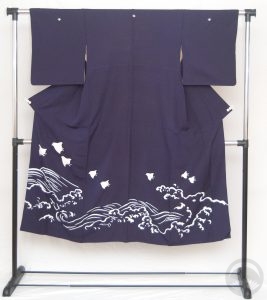


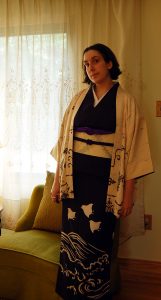
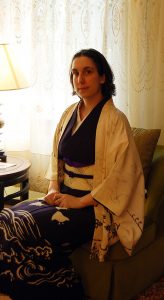


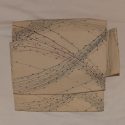
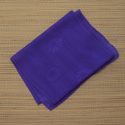


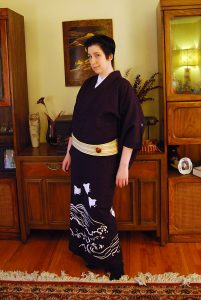
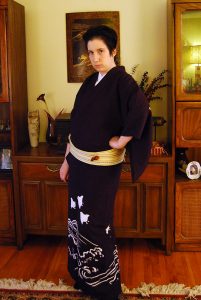
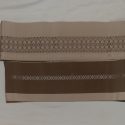













 Bebe Taian
Bebe Taian CHOKO Blog
CHOKO Blog Gion Kobu
Gion Kobu